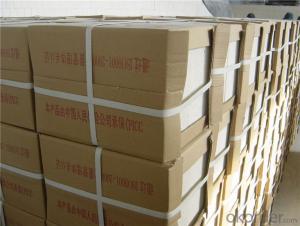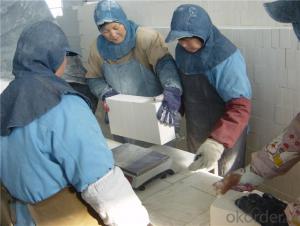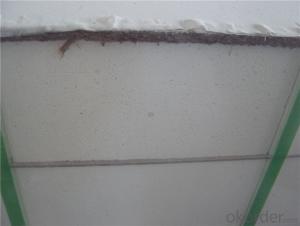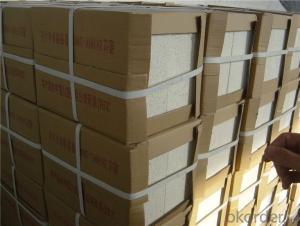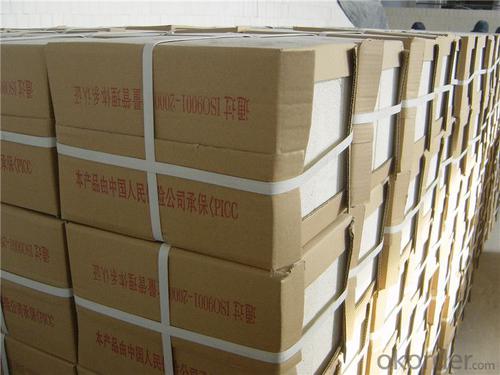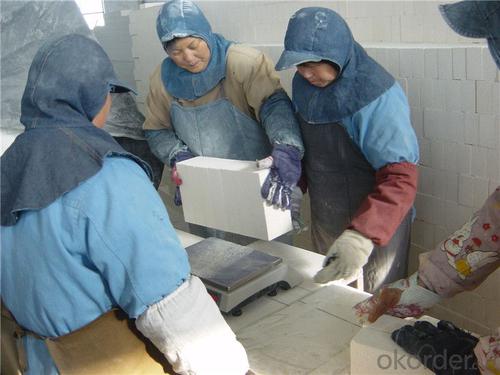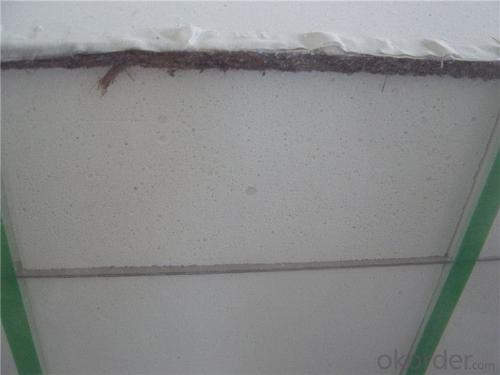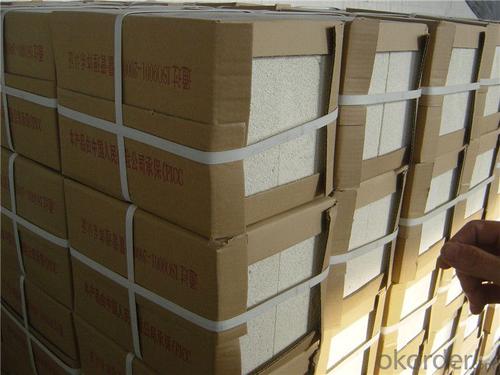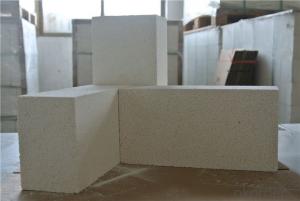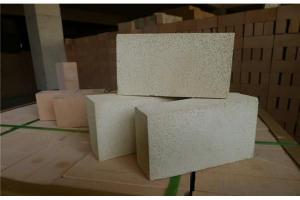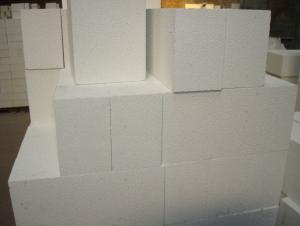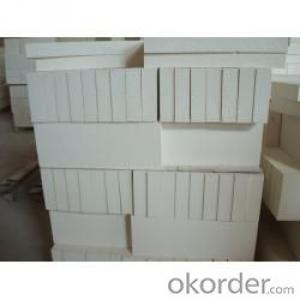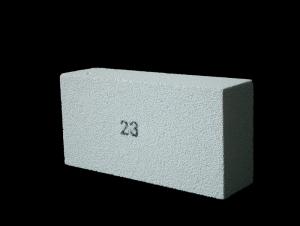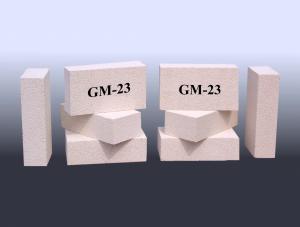Lightweight Fire Clay Insulation Brick As A Building Material
- Loading Port:
- Shanghai
- Payment Terms:
- TT OR LC
- Min Order Qty:
- 1 m.t.
- Supply Capability:
- 1000 m.t./month
OKorder Service Pledge
OKorder Financial Service
You Might Also Like
Thermal Insulation Fire Clay Brick
Refractory brick is a block of refractory ceramic material used in lining furnaces, kilns, fireboxes, and fireplaces.
We provide high quality Refractory Fire Bricks that are used on wide range in the various industries like Cement, Glass and Steel. Refractory Fire Bricks are provided as per the quantity and specifications required by the customers. We provide an extensive range of Refractory Fire Bricks at reasonable prices that depend upon the quantity ordered.
Application
Insulating Fire Brick are used for the lining of converter, alternating current arc furnace, direct Current arc furnace and the ladle slag line, etc.
Company Advantage
(1)Long Insulating Fire Brick manufacture history: 25 years manufacturer
(2)Advanced equipment
(3)Diversification of production standards: ISO ANSI FEPA JIS ASTM
(4)Flexible payment: T/T L/C D/P D/A
(5)Professional marketing team and after-sale service
Insulating Fire Brick main feature:
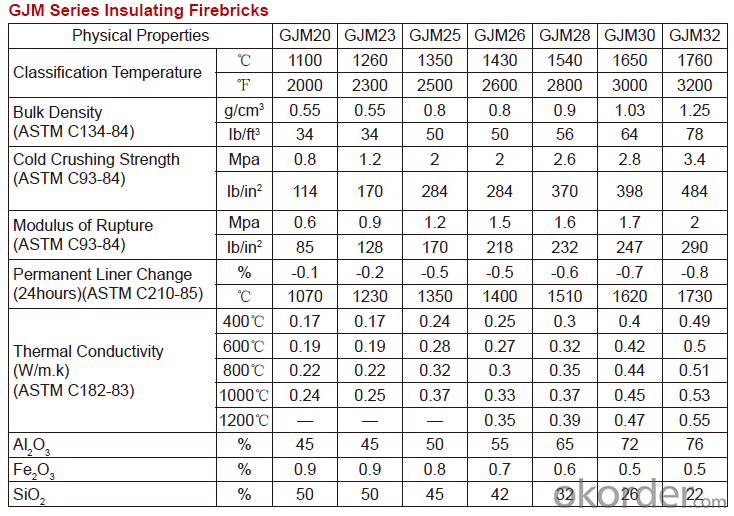
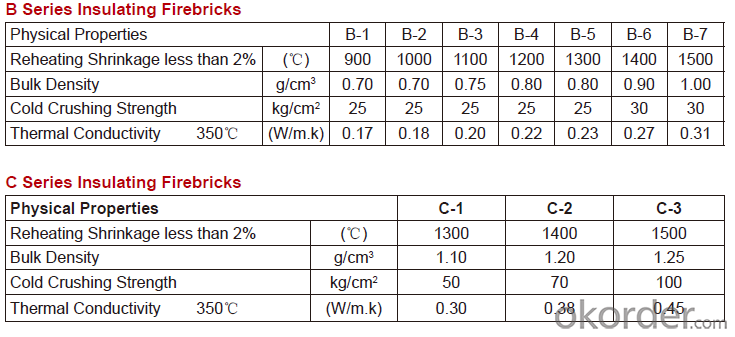
Equipment
1 unit of Ceramic Abrasive (SG Abrasive) pilot production line
2 units of Compact grain Abrasive pilot production lines
1 unit of high-end coated abrasives (abrasive cloth) production line
2 units of Boron Carbide production lines
3 large flexible crushing and sieving lines for grit production lines
6 units of 5000KVA-10000KVA dumping type electric arc furnaces for Brown Fused Alumina fusion
Q1 What’s the transport method?
A1 FCL delivery goods with wooden pallet or wooden case by sea; If LCL delivery, must with wooden case; Sometimes need open top, flat rack or bulk cargo.
Q2 What’s the required payment term?
A2 Generally 30% TT as the prepayment, 70% TT before delivery. If need, 100% Irrevocable Letter of Credit or negotiation.
Q3 Which country are our products exported to?
A3 Apart from entire Chinese market, the US, Russia, Japan, Korea, Australia and some Southeast Asian Nations.
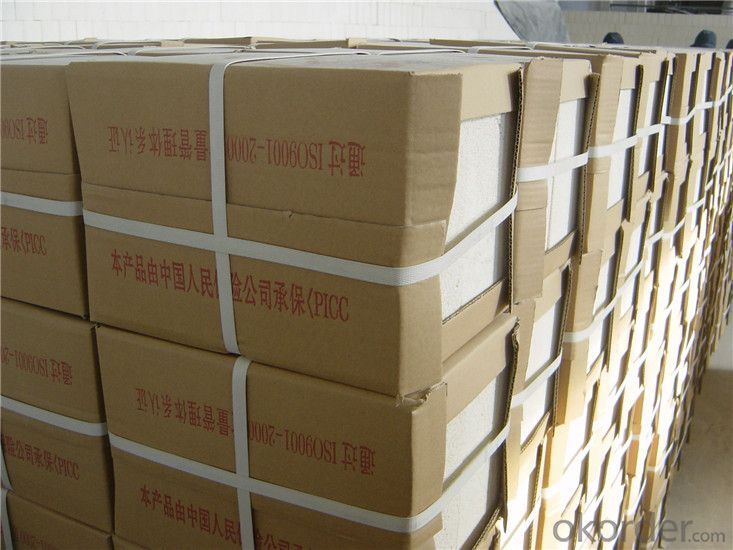

- Q: How do insulating fire bricks provide thermal insulation?
- Insulating fire bricks provide thermal insulation through their unique composition and structure. These bricks are made from lightweight materials such as clay, shale, and other minerals, which have low thermal conductivity. This means that they do not easily conduct heat, allowing them to act as a barrier against heat transfer. Additionally, insulating fire bricks are designed with a porous structure. The presence of small air pockets within the bricks reduces the conduction of heat. These air pockets act as a barrier, limiting the transfer of heat from one side of the brick to the other. Furthermore, insulating fire bricks have a high melting point, making them suitable for use in high-temperature applications. This property allows the bricks to withstand extreme heat without deforming or breaking down, ensuring long-lasting thermal insulation. In summary, insulating fire bricks provide thermal insulation by their low thermal conductivity, porous structure, and high melting point. These features work together to minimize heat transfer, making them an excellent choice for applications where thermal insulation is required.
- Q: Can insulating fire bricks be used in chimney lining?
- Yes, insulating fire bricks can be used in chimney lining. They are designed to withstand high temperatures and provide insulation, making them an ideal choice for lining chimneys to improve heat retention and prevent heat transfer to surrounding structures.
- Q: Are insulating fire bricks suitable for use in cement plants?
- Yes, insulating fire bricks are suitable for use in cement plants. They are commonly used in high-temperature applications, such as kilns and furnaces, due to their excellent thermal insulation properties and ability to withstand extreme heat. Insulating fire bricks can help optimize energy efficiency, reduce heat loss, and provide a more controlled and stable environment in cement plants.
- Q: Can insulating fire bricks be used in residential fireplaces?
- Residential fireplaces can indeed utilize insulating fire bricks. These specialized bricks are engineered to endure extreme temperatures while providing exceptional insulation, rendering them an apt option for constructing fireplaces. These bricks have the ability to retain heat, boost energy efficiency, and prevent heat loss. Moreover, they offer superior defense against thermal shock, a crucial element for enduring the intense heat produced by a fireplace. Furthermore, insulating fire bricks are lightweight, easy to manipulate, and can be effortlessly shaped or trimmed to fit any fireplace design or size. All in all, incorporating insulating fire bricks into residential fireplaces is a prudent decision for homeowners seeking to enhance their fireplace's performance and safety.
- Q: Can insulating fire bricks be used in the construction of furnaces?
- Yes, insulating fire bricks can be used in the construction of furnaces. These bricks are specifically designed to withstand high temperatures and provide excellent insulation, making them ideal for lining the walls of furnaces. They help to reduce heat loss, increase energy efficiency, and improve overall performance of the furnace.
- Q: How do insulating fire bricks affect the overall thermal stability of a structure?
- Insulating fire bricks play a crucial role in enhancing the overall thermal stability of a structure. These bricks are designed to have low thermal conductivity, which means they are effective in minimizing heat transfer between different parts of a structure. By using insulating fire bricks, the amount of heat that can escape or enter a structure is significantly reduced, resulting in improved thermal stability. In cold weather, these bricks prevent heat from escaping, keeping the interior of the structure warm and reducing the need for excessive heating. Conversely, in hot weather, they prevent the entry of external heat, helping to keep the interior cool and reducing the need for excessive cooling. The low thermal conductivity of insulating fire bricks also helps in maintaining a consistent temperature within the structure. This is particularly important in areas where there are significant temperature fluctuations, as it helps to regulate the internal climate, making the structure more comfortable for its occupants. Furthermore, insulating fire bricks are known for their high resistance to thermal shock. This means that they can withstand rapid changes in temperature without cracking or breaking. By providing a stable and durable barrier against extreme temperatures, these bricks contribute to the overall thermal stability of a structure, ensuring its longevity and reliability. Overall, insulating fire bricks have a positive impact on the thermal stability of a structure by reducing heat transfer, maintaining consistent temperatures, and withstanding thermal shock. Their use can significantly enhance the comfort, energy efficiency, and durability of a building.
- Q: Can insulating fire bricks be used for insulation in refractory lining repair?
- Yes, insulating fire bricks can be used for insulation in refractory lining repair. Insulating fire bricks are made from lightweight materials that have excellent thermal insulation properties, making them ideal for use in high-temperature applications such as furnaces, kilns, and other refractory lining structures. These bricks have low thermal conductivity and high resistance to thermal shock, allowing them to effectively insulate and protect the refractory lining from heat, preventing heat loss and reducing energy consumption. Moreover, insulating fire bricks are easy to install and replace, making them a cost-effective choice for refractory lining repair.
- Q: Do insulating fire bricks have a high electrical resistivity?
- Insulating fire bricks are generally characterized by their high electrical resistivity. This characteristic arises from their specific design, which aims to minimize thermal conductivity and maximize thermal resistance. Consequently, the insulating materials employed in these bricks, including alumina, silica, and other refractory materials, exhibit inherently high electrical resistivity. Moreover, the manufacturing procedures frequently incorporate the incorporation of insulating additives, thereby augmenting the electrical resistivity of the fire bricks. Consequently, insulating fire bricks prove to be highly effective in mitigating heat transfer and sustaining elevated temperatures across diverse industrial applications, such as kilns, furnaces, and thermal insulation systems.
- Q: What is the typical thermal diffusivity of an insulating fire brick?
- The typical thermal diffusivity of an insulating fire brick is around 0.1 to 0.5 mm²/s.
- Q: Are insulating fire bricks resistant to sulfates?
- Yes, insulating fire bricks are generally resistant to sulfates. They are designed to withstand high temperatures and are made from materials such as alumina and silica, which are known to have good chemical resistance. However, it is recommended to check the specific product specifications or consult with the manufacturer to ensure their suitability for sulfates in your specific application.
Send your message to us
Lightweight Fire Clay Insulation Brick As A Building Material
- Loading Port:
- Shanghai
- Payment Terms:
- TT OR LC
- Min Order Qty:
- 1 m.t.
- Supply Capability:
- 1000 m.t./month
OKorder Service Pledge
OKorder Financial Service
Similar products
Hot products
Hot Searches
Related keywords
